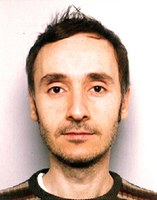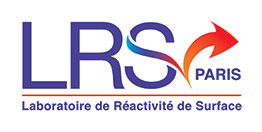David Loffreda

An Introduction to DFT Models of Metallic Nanoparticles: Applications from Synthesis to Reactivity
Abstract : During the last three decades, metallic nanoparticles and nanoalloys in the range of several nanometers have been intensively studied in the literature for their potential interesting catalytic properties, in various domains ranging from energy, environment, fine chemistry and biomedical applications (radiotherapy for instance).
In this presentation, an introduction to the DFT modeling of metallic nanoparticles will be exposed, for metallic nanoclusters in the range of 1-4 nm.
The stability and the reactivity of several systems will be discussed from a theoretical standpoint, by considering them in an idealistic environment (nanoalloys with various size, morphology and chemical composition), by modeling the effect of the synthesis environment, and by examining the reactivity for fuel cell applications.
David Loffreda - CNRS research director
Laboratoire de Chimie, UMR CNRS 5182
Ecole Normale Supérieure de Lyon
David Loffreda obtained a PhD in Theoretical Chemistry and Heterogeneous Catalysis in 1999 from The University Claude Bernard Lyon 1, Villeurbanne, France (University of Lyon), under the supervision of Professor Philippe Sautet (University of California, Los Angeles, USA). Following this he worked as a post-doctoral researcher at SISSA, Trieste, Italy during two years (2000-2001) and under the supervision of Professors Stefano Baroni and Stefano de Gironcoli. He was appointed as a CNRS Researcher in October 2001 at IRCELYON, Villeurbanne, France, with the following topic: "Theoretical description of reactivity in heterogenous catalysis". In 2004 he moved to Ecole Normale Supérieure de Lyon, France, once the laboratory of chemistry (UMR CNRS 5182) has been founded. Since 2015 he has been a CNRS Research Director, heading the Theory group of this Laboratory.
Throughout those years, his main activities have covered the following research themes:
• Theoretical modeling of chemical reactivity at complex interfaces
• Metallic nanoparticles and alloys, reducible oxide and graphitic supports
• Density functional theory (DFT), DFT+U approaches (reducible oxides)
• Ab initio molecular dynamics of Born-Oppenheimer type (AIMD, BOMD)
• Micro-kinetic modeling
• Simulation of vibrational and electronic spectroscopies (RAIRS, HREELS, XPS)
A list of his publications can be found here.
Egalement dans la rubrique
- 26/02/2018 - Jean Marc Greneche
- 26/03/2018 - Anthoula Papageorgiou
- 28/05/2018 - Exposés Post Doc
- 04/06/2018 - Claude Grison
- 18/06/2018 - Exposés Master 1/4
- 22/06/2018 - LIANA SOCACIU-SIEBERT
- 25/06/2018 - Exposés Master 2/4
- 28/06/2018 - Filipa Ribeiro
- 02/07/2018 - Exposés Master 3/4
- 20/07/2018 - Takanori Miyake + Exposé Master 4/4
- 03/12/2018 - Antonella Gervasini



